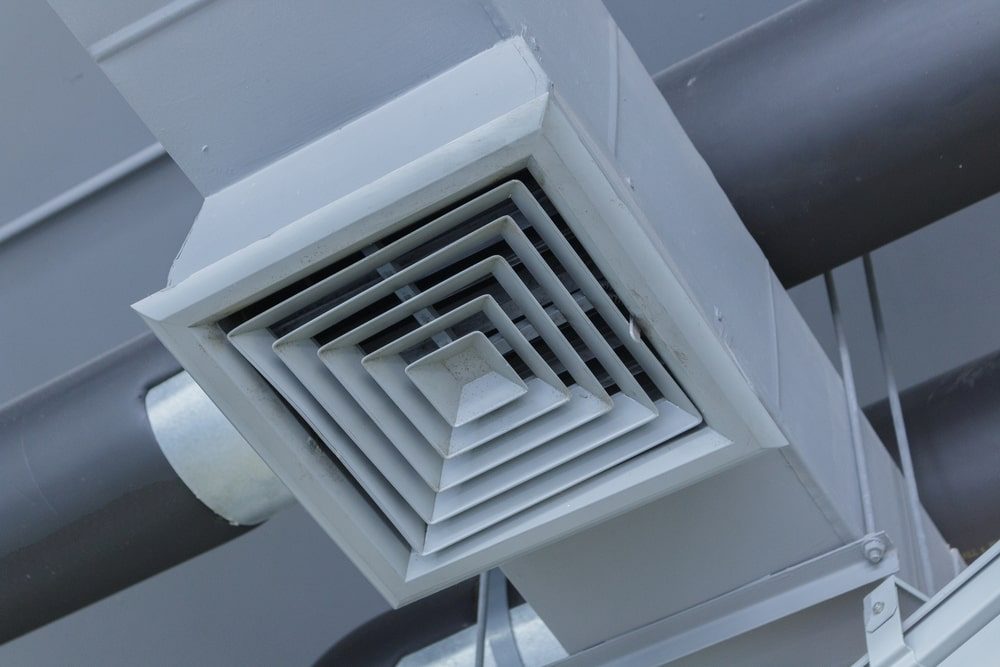
Summer is just around the corner! As the temperatures rise, many Charlottesville homeowners will be relying on their ceiling fans to provide relief from the heat. However, did you know that the ceiling fan direction can have a significant impact on your comfort and utility bills? The Otter Guys, your trusted air conditioning team, is here to guide you through the proper ceiling fan direction to help you stay cool and save on your energy bills.
Ceiling fans are an energy-efficient and cost-effective way to maintain a comfortable temperature in your home during the sweltering summer months. By understanding the correct ceiling fan direction for summer, you can ensure optimal performance. And make the most of your fan’s potential on your home comfort.
So, which way should a ceiling fan turn in the summer? The answer is simple: counterclockwise. When your ceiling fan spins counterclockwise, it pushes cool air downward. This creates a wind-chill effect that helps you feel cooler without actually lowering the room temperature. This ceiling fan direction for summer is essential to maximizing your fan’s cooling capabilities and maintaining a pleasant environment in your home.
How to adjust your ceiling fan direction
Here are some practical tips on how to adjust your ceiling fan direction in summer to maximize its cooling benefits:
locate the ceiling fan direction switch
Most ceiling fans come equipped with a small switch on the motor housing that allows you to change the rotation direction. Look for this switch, typically located on the side or bottom of the fan’s motor housing. Ensure the power is turned off before making any adjustments.
Flip The Switch
With the power off, flip the switch to the summer setting, which will make your fan blades rotate counterclockwise. Keep in mind that some fans might have labels indicating the proper setting for summer, while others may not. When in doubt, test your fan to ensure the blades are spinning counterclockwise when viewed from below.
Test Your Fan
Turn the power back on and switch your fan to its highest setting. Observe the direction the blades are spinning and make sure you can feel a noticeable breeze below the fan. If you don’t feel the breeze, double-check the switch position and try again.
Adjust Fan Speed
To maximize your fan’s cooling effect and energy efficiency, experiment with different speed settings. A higher speed will produce a stronger wind-chill effect, while a lower speed will consume less energy. Find the ideal balance between comfort and efficiency that suits your needs.
Regular Maintenance
Just like your heating and air conditioning system, your ceiling fan requires regular maintenance to ensure peak performance. Clean your fan blades regularly to prevent dust buildup and ensure they are well-balanced. A well-maintained fan will not only operate more efficiently but will also extend the lifespan of your ceiling fan.
Don’t Forget to Reverse the Direction in Winter
As the seasons change, it’s crucial to switch your ceiling fan direction to accommodate the varying temperatures. In winter, reverse the fan direction to clockwise, which will help redistribute warm air that has risen to the ceiling. This will keep your living space warmer and reduce the strain on your heating system.
conclusion
Understanding the right ceiling fan direction for summer is key to maintaining a comfortable home environment and maximizing your energy savings. By following these simple tips, you can enjoy the cooling benefits your ceiling fan provides during the warm summer months.
If you need assistance with your heating and air conditioning system, or have questions about optimizing your home’s comfort, don’t hesitate to call The Otter Guys!





